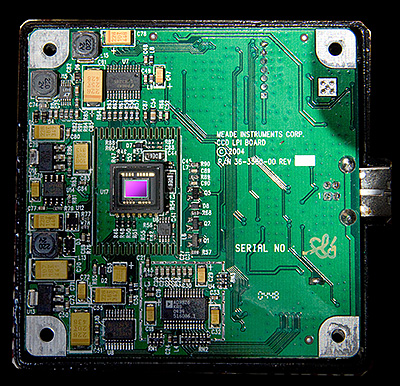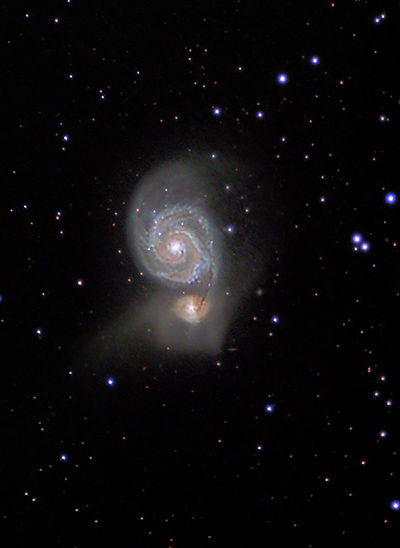|
5/29/2011. I thought it would be nice if someone offered an old Tectron focuser on Astromart to use in the nascent 10-inch reconstruction or to use with the big dob which would free up its rudimentary helical focuser for the 10-inch. One day (one day!) later, someone did so at a killer price. Bluff called.
The sky is clear today and is predicted to stay clear tonight. I put the newly flocked A-P back outside, watched the Indy 500, enjoyed dinner on the porch, and while Amy practiced "The Arkansas Traveler," I started setting up for color data of M51. My plan is to collect RGB for an hour or two, then let the scope collect luminance until dawn. It's a warm evening (70F), and the ST2000 can't stay much below -20C. If the weather makes a habit out of this, I'll need to get the water-cooling kit out. The Meade DSI-pro I use for guiding refused to feed data to the comptuer. I unplugged and replugged it a few times, verified its drivers with the Meade Envision application, and finally brought it inside and opened the case to see if it had sustained more water damage a couple of weeks ago than I thought. Yes. Lots of moisture still evident. I played a hair dryer over the innerds, noted that I need to reconnect the heatsink to the chip, and put it back together. It works! It was very noisy while the heat of the dryer dissipated but within ten minutes or so, it was guiding nicely. The ST2000XM had meanwhile decided to go on the blink. I feared an altogether more intimidating version of the same problem, but in the end it appeared that the software had merely become confused by all the USB connecting and reconnecting. I restarted all relavent apps, and began taking 300s x 7 in RGB, to be followed by L until dawn. 30 minutes into red M51 data, I think all is well. I tweaked focus at the start of the L-series, took flats and darks and called it a night. Here's the first cut at combining all 40 of tonight's useful L frames, my previous 57 L frames, and tonight's 21 RGB frames:
M51, a pair of interacting galaxies in Canes Venatici
This image uses only data common to all 119 frames. I think a better composition would be to use tonight's images to define the frame and then layer in the previous L frames where data are available. There's a bright (16th magnitude...) edge-on galaxy at upper left lost in this narrower view. There's an 18th magnitude galaxy just outside (below, right) the isoceles triangle of 11th and 12th magnitude stars at middle right that's just apparent in the higher resolution frames. I opened the DSI again and put fresh heat-conducting grease between the heatsink's "cold finger" and the imaging chip. I think the rain compromised that, and if the rain didn't, then opening the case without taking care to preserve the heat-conducting medium did. We'll see if there is any difference next time out, maybe tonight.
|
:: top ::
© 2011, David Cortner

